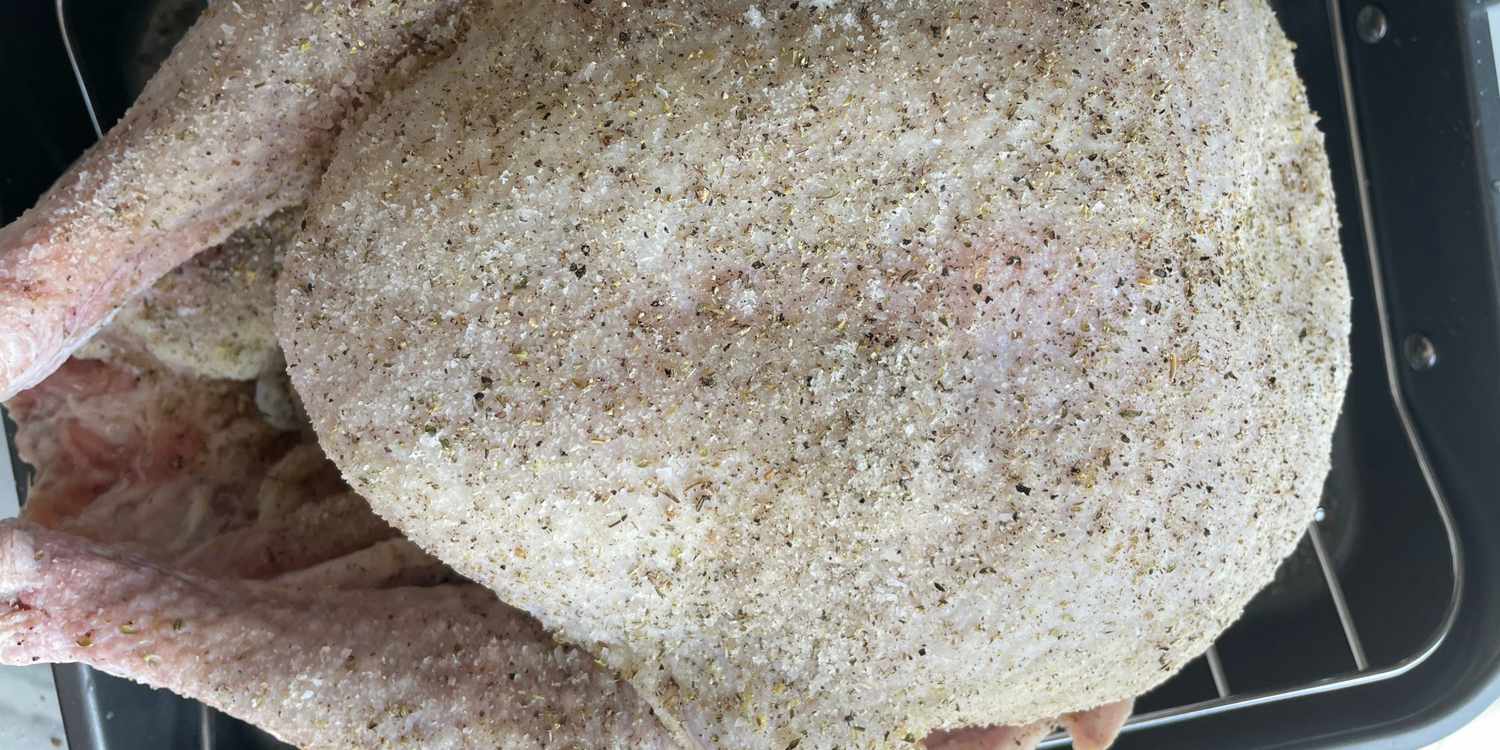Okay, it’s true and confusing: Technically speaking, dry-brining is a contradiction in terms since a brine is defined as a solution of water and salt. But bear with us here, folks, because we think you’re going to love the results of dry-brining turkey.
What Is Dry-Brining?
Dry-brining is essentially intensive salting. It’s like wet-brining without the water. And it does exactly what wet-brining does, only without the bother of finding a large enough container to submerge the turkey and enough fridge space to let it do its thing. The salt helps to draw out the turkey’s juices (osmosis!) and then dissolves into those juices, creating what is essentially a naturally occurring brine. That brine is then reabsorbed into the meat to give it a tender inside and a crispy outside. Also, fans of this method swear by the taste of a dry-brined turkey because its flavor is not diluted by water.

How Long Should You Dry-Brine a Turkey?
You’ll need to plan ahead because a dry-brined whole turkey will need to sit in the fridge for 12 to 72 hours. The longer it sits, the more effective your brine will be. If you start to notice some slight blue/purple discoloration on the exterior of your turkey as you dry brine, don’t worry. That’s totally normal and will disappear once you cook the turkey.
How to Dry-Brine a Turkey

Ingredients:
- Thawed turkey
- 1 tablespoon of kosher salt for every 5 pounds of turkey
- 1 teaspoon white or brown sugar
- Freshly ground black pepper, to taste
- Dried herbs such as rosemary, thyme, sage, celery seeds, etc.

1. Mix the dry brine together.
Mix the salt, sugar, pepper, and herbs together in a small bowl.

2. Prep the turkey.
Remove the turkey from the packaging. Remove the giblets and neck from the cavity and discard or save for turkey gravy. Use a paper towel to pat the outside of the turkey dry.

3. Sprinkle the turkey with the dry brine.
Place the turkey breast-side up on a roasting pan or rimmed baking sheet with a cooling rack inside. Use your fingers to loosen the skin of the breast and legs. (If you’re just sprinkling the brine on the skin, then the salt mixture will need more time to move through the skin and penetrate the meat.) Sprinkle the turkey inside and out with salt mixture, concentrating most of the salt on the breast area. If you’re going to truss the turkey, do it now.

4. Refrigerate.
Refrigerate uncovered for 12 to 72 hours. Leaving your bird uncovered in the fridge is an extremely effective way to dry out the skin, which is what yields an outstandingly crispy, golden-brown bird after roasting.

5. Roast.
No need to rinse the bird, just pat it dry, rub with oil, and proceed with the roast turkey recipe of your choice.
Note: A dry-brined turkey retains moisture so well that it usually doesn’t yield a lot of pan drippings for gravy. To keep from burning away what drippings there are, pour unsalted or low-sodium turkey or chicken stock into the roasting pan before it goes into the oven. Taste the liquid before you make gravy to make sure it’s not too salty.
Favorite Dry-Brined Turkey Recipes
- Dry-Brine Turkey
- Dry-Brined Turkey
- 10 Turkey Brine Recipes That Flavor Your Bird from the Inside Out
Related:
- How to Cook a Turkey
- How to Cook a Small Turkey for a Low-Key Thanksgiving
- Browse our entire collection of Turkey Recipes.




